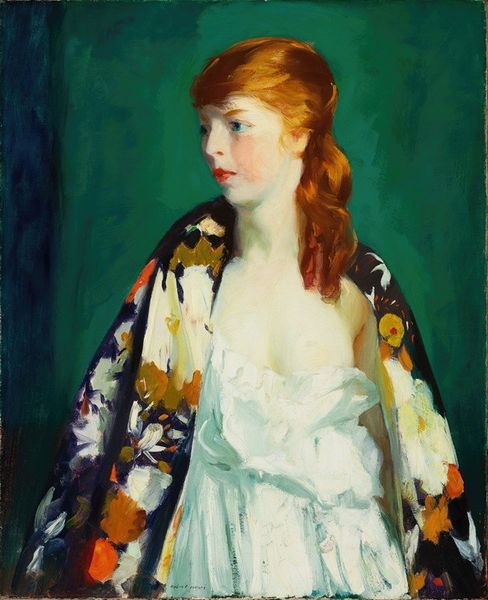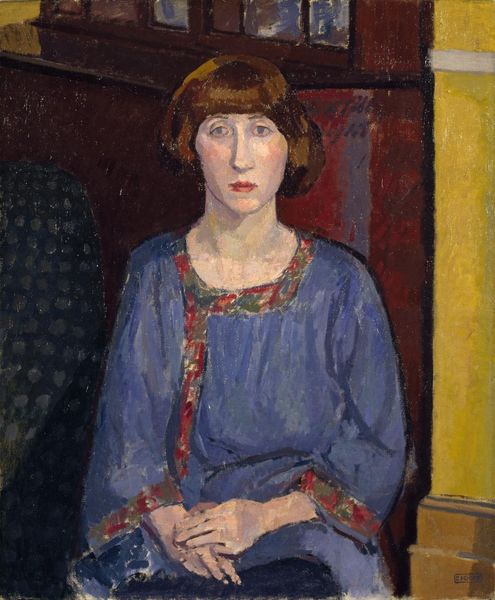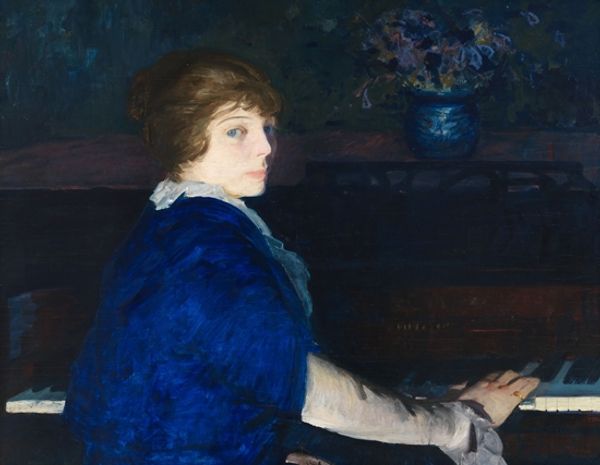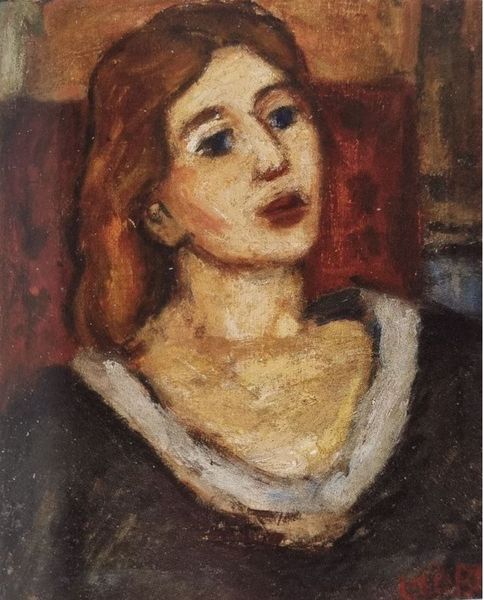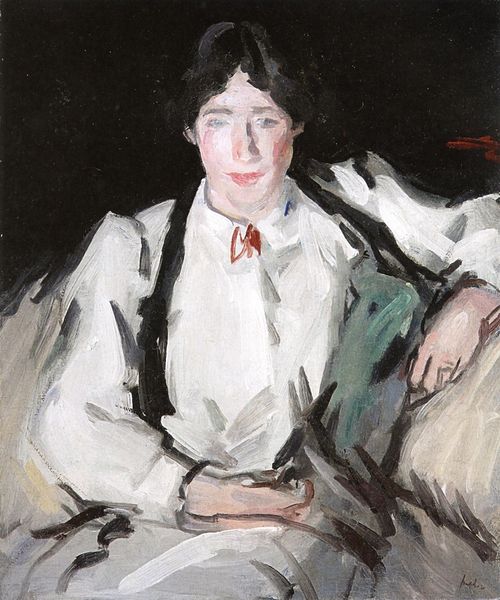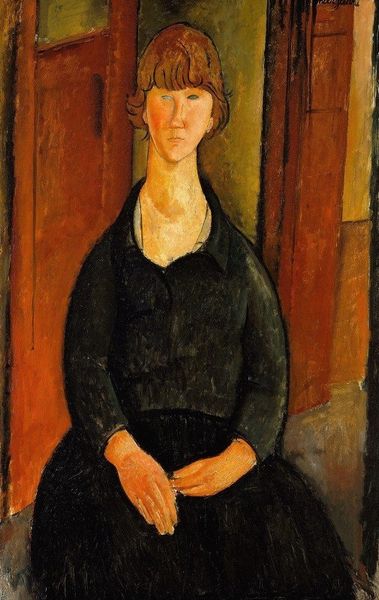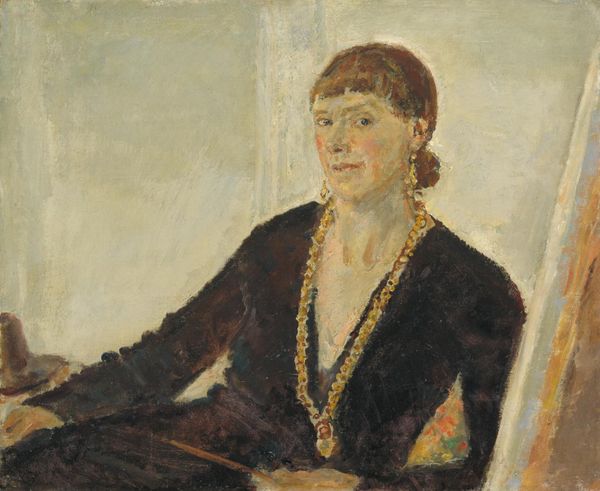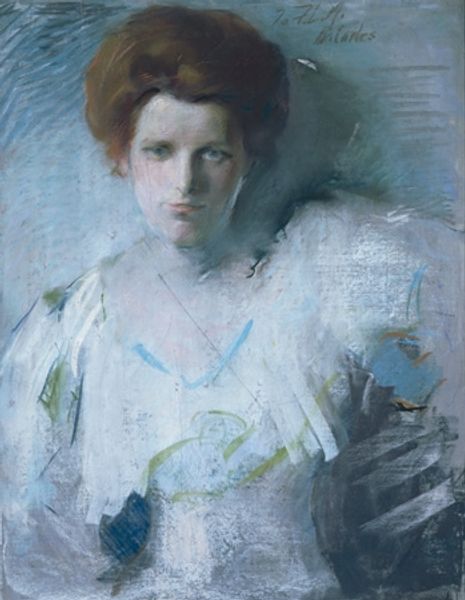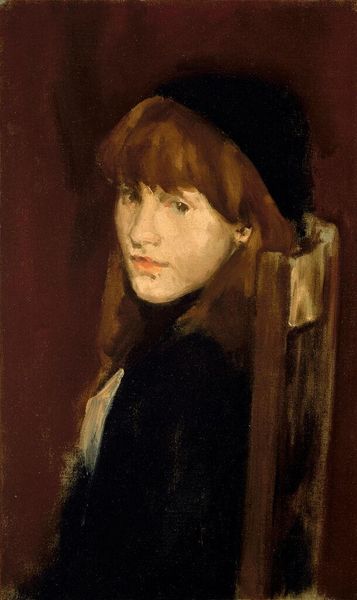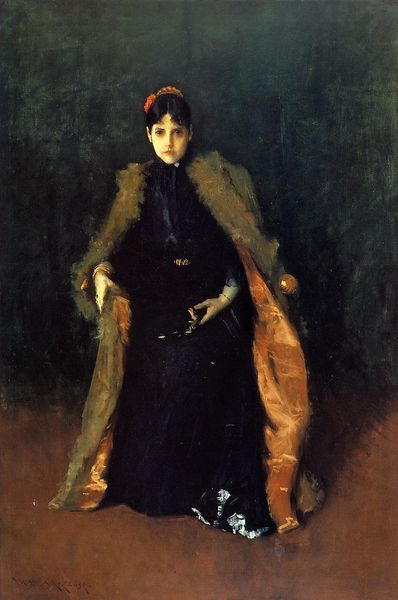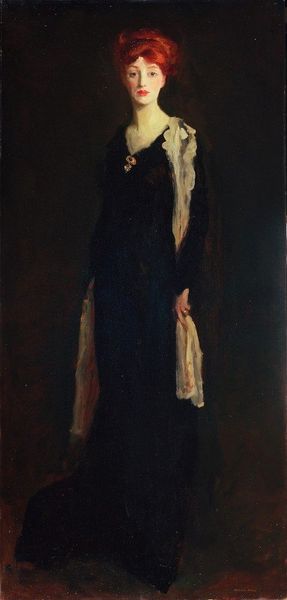
Copyright: Public Domain: Artvee
Editor: This is George Bellows’s "Portrait of Florence Pierce," painted in 1914, using oil on canvas. The contrasting light and dark areas give the work a dramatic feel. How should we interpret its stark composition? Curator: Well, consider the Ashcan School movement Bellows was associated with. It challenged academic traditions by depicting everyday life, often focusing on the urban working class. With that context in mind, do you see this portrait aligning with or diverging from those ideals? Editor: That's interesting! The sitter isn’t from the working class. So is he presenting her in opposition to that aesthetic, or still embracing the ideas of his art movement? Curator: I think Bellows challenges the notion of representation itself. He’s depicting a modern woman, in modern garb, but filtered through the traditions of portraiture. Do you think that the way that her hands are so emphasized speaks to some hidden meaning? Are the other darks a way to highlight the material properties of the dress itself? Editor: That makes a lot of sense. Maybe he’s asking us to consider how representation, even of a seemingly simple subject, always carries layers of historical and social context. Curator: Exactly! And what might those contexts be for women in society? This work offers a point to delve into societal norms surrounding women's roles and status at the beginning of the 20th century. It’s a mirror reflecting not just Florence, but also the era’s anxieties and aspirations. Editor: That definitely offers new possibilities to engage with the artwork. It moves it beyond a simple portrait to an exploration of identity and social positioning. Curator: Indeed! Seeing art as a form of visual activism – inviting critical reflection – allows it to spark insightful discussions that resonate even today.
Comments
No comments
Be the first to comment and join the conversation on the ultimate creative platform.
